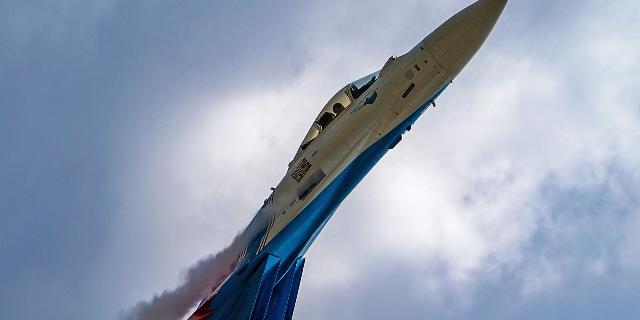Currently, there are about 100 such aircraft in service, and several dozen more have been ordered; but the Su-35S has already become the basis of Russian fighter aircraft to gain air supremacy.
Mark Episkopos
Combining versatility, efficiency and excellent performance, the Su-35 has secured the undisputed title of Russia's best fighter in one important category. We are talking about fighters aimed at gaining air superiority that do not have stealth properties.
This fighter was the result of Soviet attempts in the 1980s to create the most modern version of the Su-27 with new engines, upgraded on-board electronics and improved aerodynamic characteristics. The new aircraft was named Su-27M and made its first flight in 1988. Several production models came out of the factory workshops, but after the collapse of the Soviet Union, the project's funding quickly dried up. The Sukhoi Design Bureau renamed the fighter the Su-35 in an attempt to create a new trademark for the export market. But almost nothing came of these first commercial efforts.
Work on the creation of the Su-35 was really revived only in the early 2000s as part of a general program to modernize the Air Force in order to reduce the gap between Russian aviation inherited from the USSR and the latest Western fourth-generation fighters. The fighter that we call the Su-35 today is actually a model of the Su-35S. This is the result of extensive alterations and design changes. This explains the significant difference between the original Su-27M and the modern Su-35S, which arose over 15 years of work by Russian aircraft manufacturers.
The Su-35S is a single-seat fighter designed to provide air superiority, powered by the same AL-41F1S engines that were installed on the first production batch of fifth-generation multirole fighters, the Su-57. The maximum speed of the aircraft is 2,400 kilometers per hour, and the combat range is 1,600 kilometers. But behind these dry figures lies one of its main advantages, which is super-maneuverability. The Su-27's standard duck aerodynamic design has been replaced by thrust vector-controlled nozzles. This gave the fighter noticeable improvements in maneuverability characteristics in aerial combat.
The Su-35S received a glass cockpit, and with it, large-scale changes in the on-board electronics. Liquid crystal displays and digital control devices have replaced the traditional analog configuration of the older version of the Su-27. This is not the most modern equipment among today's avionics, but the upgraded Irbis-E phased array radar is in itself a powerful weapon capable of simultaneously tracking up to 30 targets at a distance of approximately 350 kilometers.
But what makes the Su-35S really superior to many fourth-generation aircraft and even the fifth-generation F-22 Raptor fighter is its enormous combat load and amazingly flexible weapons system. The combat load of the fighter is 8,000 kilograms and is distributed over 12 suspension nodes. The aircraft also has an internal GSH-30-1 30 mm aviation cannon. Six short-range R-74 air-to-air missiles allow effective combat at a short distance, and 12 R-77 aviation missiles allow hitting targets beyond the line of sight. They are considered the Russian response to the American AIM-120 AMRAAM missiles. Although the main purpose of the Su-35 is to gain air superiority, it can strike ground targets with a wide range of guided aerial bombs, as well as air-to-surface missiles and cruise missiles such as the Kh-31, Kh-35, Kh-59 and Kalibr. According to available information, the Su-35 was repeatedly used to strike ground targets during Russia's involvement in the Syrian civil war. He also carried out surveillance and interception of Israeli aircraft flying into Syrian airspace.
The Su-35 failed to meet the expectations of the developers and become a widely sold export model, although the Chinese and Egyptian Air Forces ordered 24 aircraft each. The main customer of the Su-35 today is the Russian armed Forces. Currently, there are about 100 such aircraft in service, and several dozen more have been ordered; but the Su-35S has already become the backbone of Russian fighter aircraft to gain air supremacy. The Su-57 will slowly replace the Su-35S, and 76 such fighters are scheduled to enter service by 2028. But time will tell whether the Russian defense industry is able to build so many Su-57s in such a short time.

